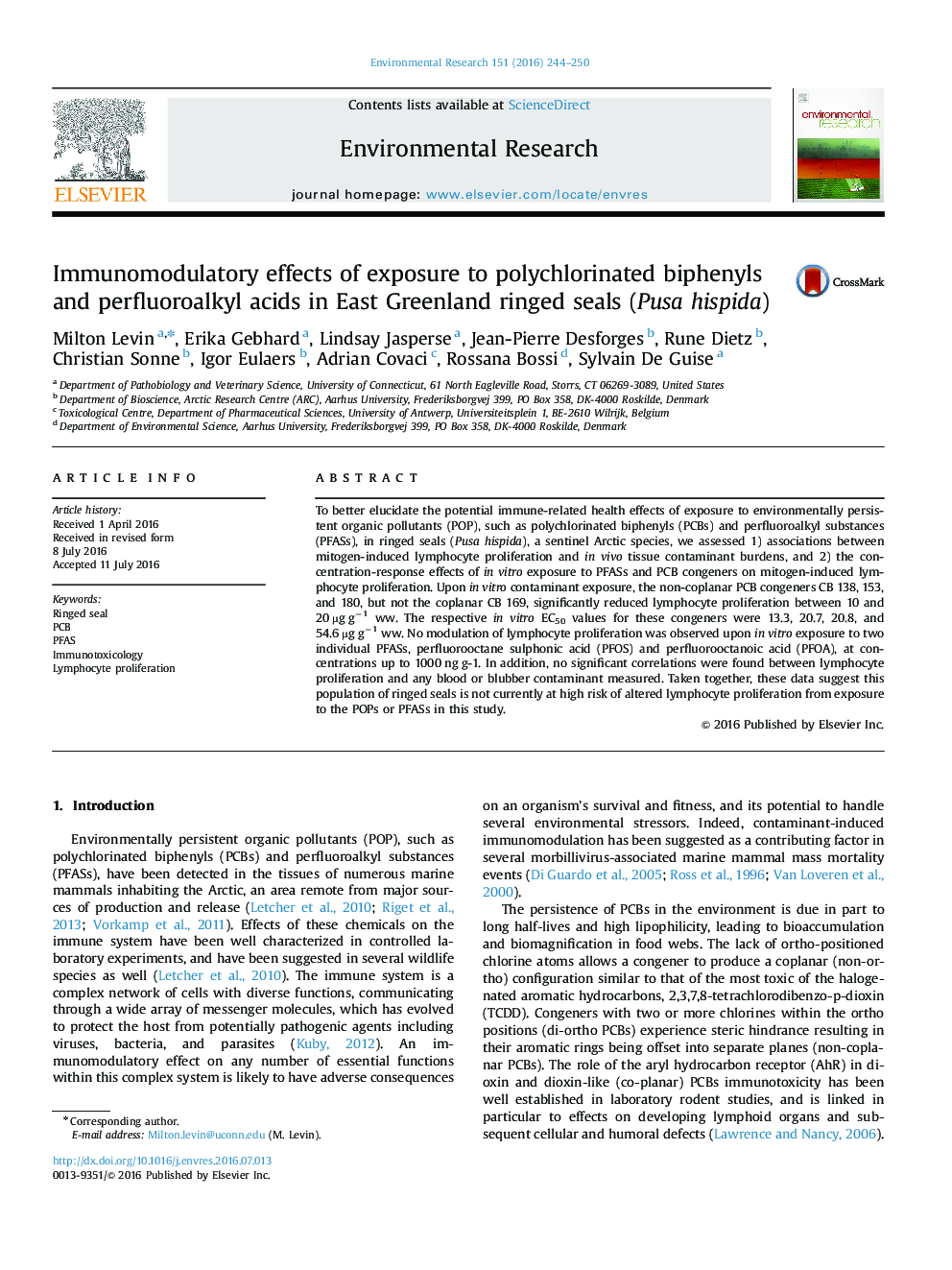| Article ID | Journal | Published Year | Pages | File Type |
|---|---|---|---|---|
| 6351339 | Environmental Research | 2016 | 7 Pages |
Abstract
To better elucidate the potential immune-related health effects of exposure to environmentally persistent organic pollutants (POP), such as polychlorinated biphenyls (PCBs) and perfluoroalkyl substances (PFASs), in ringed seals (Pusa hispida), a sentinel Arctic species, we assessed 1) associations between mitogen-induced lymphocyte proliferation and in vivo tissue contaminant burdens, and 2) the concentration-response effects of in vitro exposure to PFASs and PCB congeners on mitogen-induced lymphocyte proliferation. Upon in vitro contaminant exposure, the non-coplanar PCB congeners CB 138, 153, and 180, but not the coplanar CB 169, significantly reduced lymphocyte proliferation between 10 and 20 µg gâ1 ww. The respective in vitro EC50 values for these congeners were 13.3, 20.7, 20.8, and 54.6 µg gâ1 ww. No modulation of lymphocyte proliferation was observed upon in vitro exposure to two individual PFASs, perfluorooctane sulphonic acid (PFOS) and perfluorooctanoic acid (PFOA), at concentrations up to 1000 ng g-1. In addition, no significant correlations were found between lymphocyte proliferation and any blood or blubber contaminant measured. Taken together, these data suggest this population of ringed seals is not currently at high risk of altered lymphocyte proliferation from exposure to the POPs or PFASs in this study.
Related Topics
Life Sciences
Environmental Science
Health, Toxicology and Mutagenesis
Authors
Milton Levin, Erika Gebhard, Lindsay Jasperse, Jean-Pierre Desforges, Rune Dietz, Christian Sonne, Igor Eulaers, Adrian Covaci, Rossana Bossi, Sylvain De Guise,
